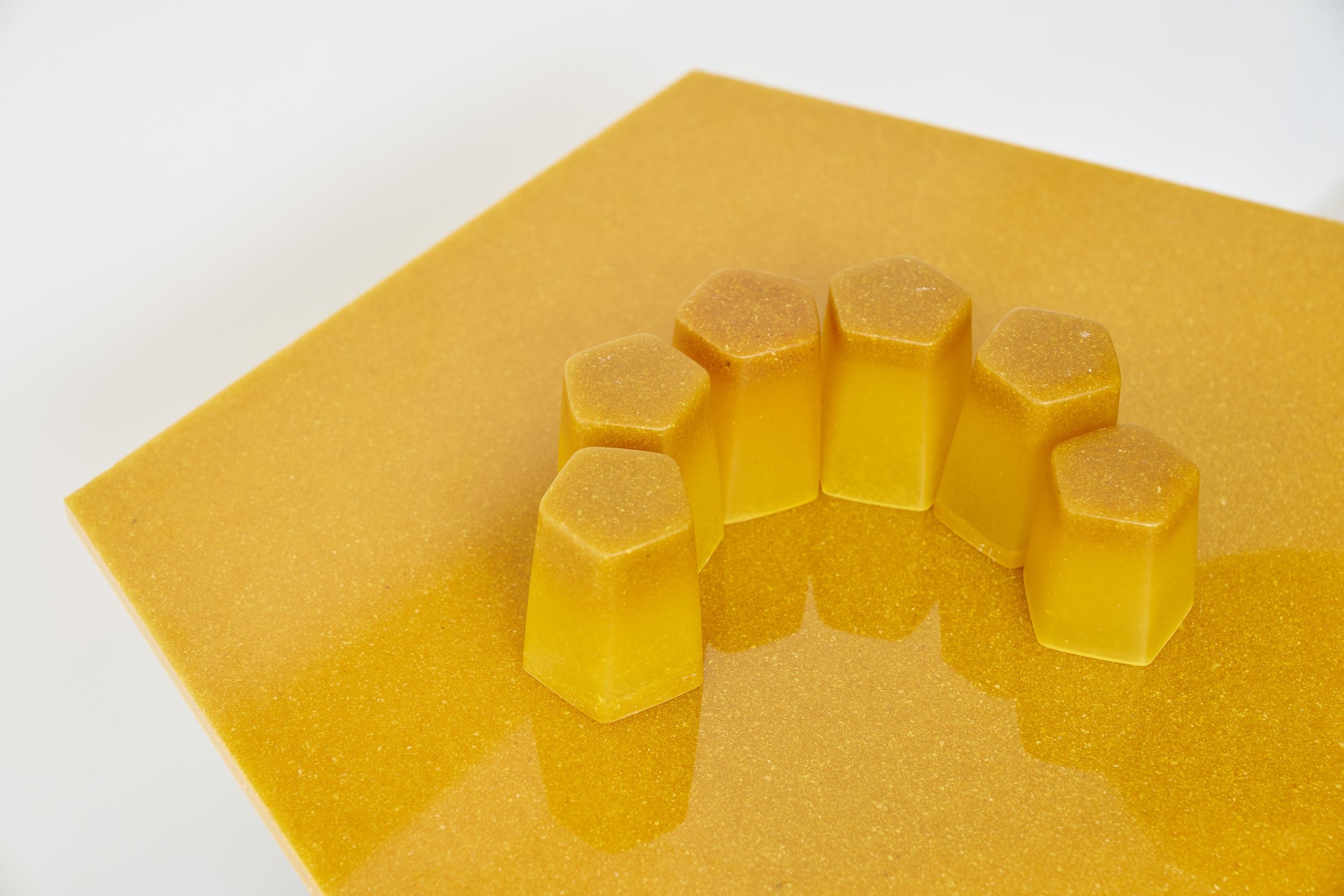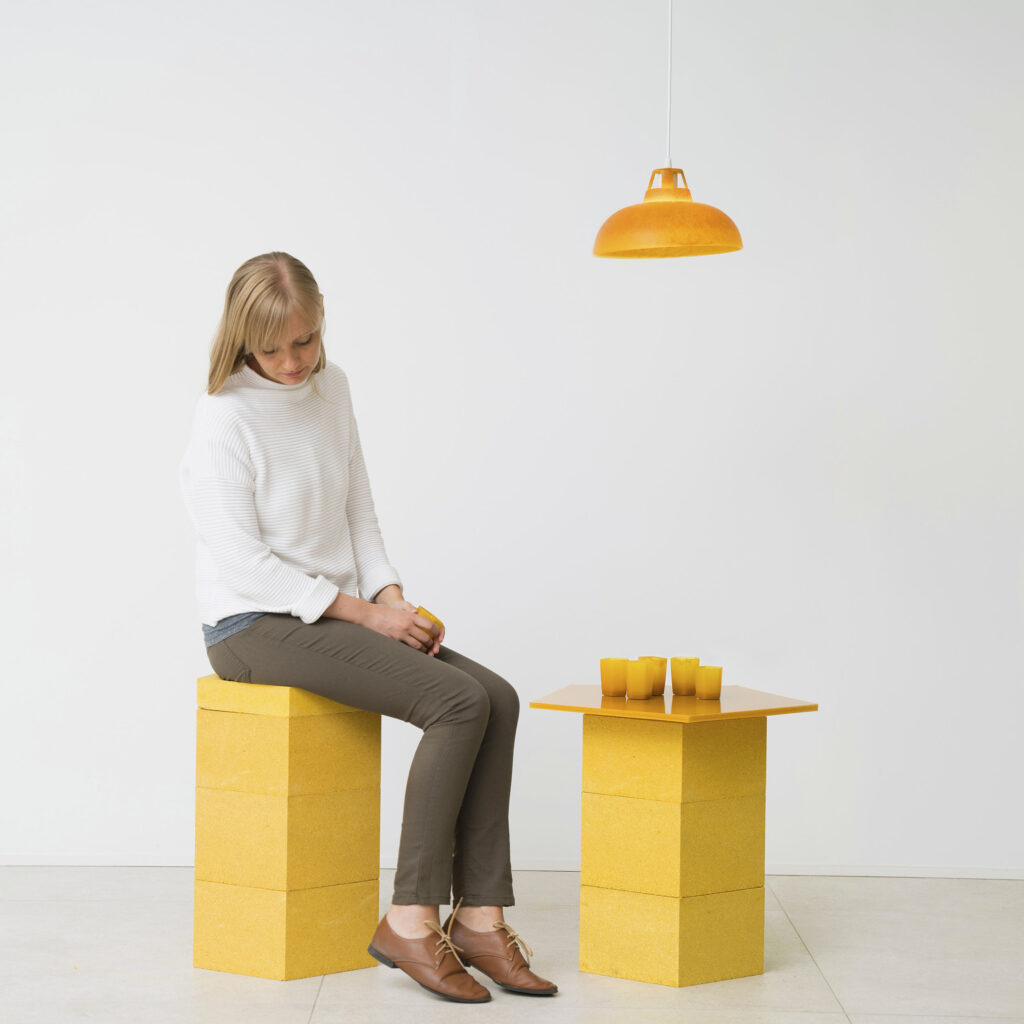Week-10

After today’s lecture, I was impressed by the new material part talking about the project which make fungi into a boat, and then I searched about this material, and it was fascinating because some people can make fungal material items like furniture through 3D printing. I continued looking for biomaterials, and I found that some studios that are using citrus peels to make new materials, and 3D printing technology can also be supported.
The ecological material of citrus is a sustainable material that is usually made from the peel and pulp of discarded citrus fruits (such as oranges, lemons, grapefruits, etc.) through special treatment and processing include threshing, compaction, blended cornstarch epoxies, and homemade cornstarch bioplastics. Through these treatments, discarded citrus fruits aretransformed into new materials with special hardness and texture, and can be used to manufacture lamps, furniture and other products.
These materials not only have good plasticity and strength, but also have the unique smell and color of fruits. For me I think these materials have a wide range of potential applications in areas such as creative design, manufacturing and construction. Since the distribution of citrus is usually produced in large quantities, the production of citrus ecological materials is also beneficial to reducing environmental pollution and resource waste.

But on the other hand, I would be cautious about adding epoxy resin as a step in the manufacturing process mentioned above. Epoxy resin itself is generally not considered a completely environmentally friendly material, as there may be some chemicals and energy consumption involved in its production and processing. It is a very strong and durable material, so it lasts longer and needs to be replaced less frequently. However, the traditional thermosetting epoxy resin is difficult to recycle directly because once hardened, its molecular structure becomes more stable and difficult to reverse. This is unlike thermoplastics, which can soften and solidify multiple times after being heated. (Although there has been research in recent years to develop environmentally friendly epoxy resins, which include some sustainable, degradable or recyclable variants. These new epoxies are designed to be more environmentally friendly, making them easier to use under certain conditions like recycling or degradation.) In the previous example, in order to make the orange peel material stronger and waterproof, people had to add epoxy resin during the production process. In my opinion, most environmentally friendly biomaterials currently face the problem of waterproofing. Therefore, it remains to be verified whether the performance, waterproofness and durability of environmentally friendly products on the market or in some examples can be comparable to traditional materials.
Since some biomaterials are not waterproof, it may be possible to use them to replace disposable plastic products. And I found that also about citrus, Repulp is a bio-sustainable project of orange waste. The orange peels are finally made into cups and have been sold. This is a bioplastic containing orange peels made from vegetables and fungi. The material uses a large amount of orange peels obtained from juice manufacturers. Use a press to remove all remaining water and juice. After turning the material into particles, polylactic acid is used as a binding material and is produced through 3D printing. Made from citrus waste, these cups can be used to replace plastic cups and can be composted when they are no longer useful.


Here, the creators replaced the previous epoxy material with polylactic acid and made the entire product naturally degradable, but since it is not as strong as plastic, this material is designed to be used on products for one or more uses. and can also achieve mass production.
These two examples remind me of the Hannover Principles mentioned in the workshop. In the eighth suggestion, we recognize that people should respect nature and the properties of the material itself in design. The products we live in always have limitations, but maybe we should make use of the characteristics of natural materials instead of forcibly changing the properties of the materials themselves for the convenience of design and processing.
Reference
Eliaz, N. et al. (2018) Microbial degradation of epoxy, Materials (Basel, Switzerland). Available at: https://www.ncbi.nlm.nih.gov/pmc/articles/PMC6267298/ (Accessed: 24 November 2023).
MaterialDriven (2018) The potential in an industry byproduct–the PEEL project by Venn Reactor, MaterialDriven. Available at: https://www.materialdriven.com/blog/2018/1/19/the-potential-in-an-industry-byproductthe-peel-project-by-venn-reactor (Accessed: 24 November 2023).
Repulp design – collection d’objets issue des agrumes (2023) Repulp. Available at: https://repulp.fr/ (Accessed: 24 November 2023).





